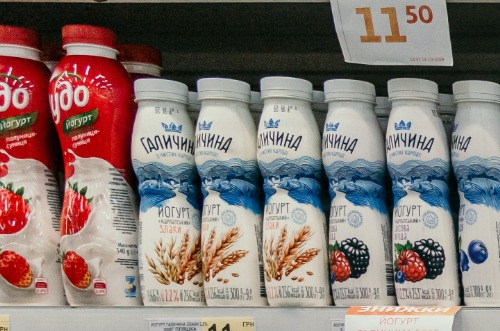Smart Packaging Solutions Continue to Grow in Demand with Global Sales Expected to Rise by 6.3% to USD 28.7 billion in 2023


The advent of smart packaging has sparked a profound transformation across the global food industry, ushering in many strategic advantages. Beyond its intrinsic capability to heighten transparency surrounding food conditions and extend product shelf life, smart packaging has emerged as a dynamic marketing instrument, fostering immersive and personalized customer interactions. Positioned at the forefront of this evolutionary shift, the food industry has seized the vast potential of smart packaging solutions, placing them as a paramount strategy to infuse packaging with both value-added attributes and compelling presentation finesse.
Far from being a mere transient trend, contemporary smart packaging is navigating the landscape of technology-enabled solutions that seamlessly interface with smartphone devices, offering a gateway to dynamic QR codes and other interactive features that elevate the user's product experience. As a result, the expenditure on smart packaging solutions is expected to reach USD 28.7 billion in 2023 and rise at a compound annual growth rate (CAGR) of 6.3% over the next decade, according to Global News Wire.

Source: Tridge, Global News Wire
Within the domain of smart packaging, a pronounced focus gravitates toward two pivotal spheres: active/intelligent packaging and connected packaging. Active packaging has garnered notable acclaim for its substantial ability to curb food and water wastage, translating to a significant reduction of 1.1 million tons and 314 billion gallons, respectively. In parallel, the allure of connected packaging has surged, bearing testimony to its escalating demand as the user base surged from 54% in 2022 to 81% in 2023. This dynamic landscape further underscores the pivotal role of technology-enabled packaging solutions in reshaping sustainability paradigms, optimizing operational efficiency, and enhancing overall user experiences.
Diving into active/intelligent packaging, substantial research is directed toward harnessing nano-composites to amplify the shelf life of perishable goods. The inherent versatility of these materials offers a canvas for tailored modifications, allowing the packaging layer to be imbued with desired attributes that, in turn, amplify the durability, freshness, and storage capabilities of consumables. These innovative packaging solutions have surged in popularity, spurred by both consumer demand and the push from governments to address the pressing issue of food wastage.
However, a new challenge emerges in the form of counterfeit products infiltrating the packaging landscape. This dynamic has triggered a notable pivot in the connected packaging sphere, where the influx of fake goods casts a shadow over sectors such as food and beverages. Consequently, the arena of connected packaging has assumed an intensified focus on countering counterfeits, igniting profound interest in advanced anti-counterfeit packaging strategies that safeguard product authenticity and consumer trust.
At the heart of innovation, North America and Europe stand as key players in driving smart packaging evolution. A standout example in 2023 is the collaboration between the renowned American multinational semiconductor company AMD and Skipso, an innovation management platform. Their joint venture led to the "AMB D2BD" program, strategically tailored to foster startups advancing smart packaging solutions and elevating shelf-life quality. This initiative epitomizes the industry's commitment to progressive packaging evolution.

Source: AMD and Skipso
Similarly, India has emerged as a leader in food packaging innovation within the Asian landscape. A prime instance is the strategic partnership between Indian Agritech startup Waycool and the esteemed Indian Institute of Technology Hyderabad. Their three-year memorandum of understanding (MoU) charts a promising trajectory to enhance the shelf life of food packaging materials through the transformative potential of biopolymers, contributing to a more sustainable packaging landscape.
As the smart packaging industry enjoys robust funding momentum, governments in the United States (US) and the European Union (EU) have proactively fostered the sector's development, recognizing the positive environmental footprint of smart packaging. An illustrative case in point is the GLOPACK initiative, strategically focused on reducing and managing agro-food packaging waste circularly. This program aims to elevate technology readiness levels (TRL) and has received substantial support from the EU, with a contribution of EUR 5.6 million, underscoring their commitment to catalyzing transformative change.
Smart packaging has emerged as a transient phenomenon and a formidable force driving a transformative wave across industries. Beyond the intrinsic advantages of bolstering product integrity, curtailing waste, and enhancing consumer convenience, smart packaging orchestrates a sophisticated balance of utility and user-centric engagement, positioning it as an indispensable cornerstone in the packaging evolution. Against the backdrop of advancing technology and evolving consumer expectations, smart packaging is poised to remain a pivotal driver in shaping a connected, efficient, and sustainable packaging ecosystem that effectively resonates with the demands of today's discerning market landscape.
For further reading, follow the links below:
1. Webinar Recap: The Importance of Digital Platforms in Agriculture

